Text: Nina Horstmann | Section: Art-Related Scientists
Abstract: The Hybrid Plattform is a unique Berlin-based university initiative that works at the interface between art, science and technology. In this article we will present some of the interdisciplinary and cross-institutional projects and activities from the ten years of existence of the Hybrid Plattform and the instigated exchange between the Technical University of Berlin [Technische Universität Berlin] and the University of the Arts Berlin and reflect on what has been learned. The range of activities cover interdisciplinary education and research projects, events and the creation of labs as centres of collaboration.
In 2011 the University of the Arts Berlin (UdK) and the Technische Universität Berlin (TU Berlin) began a joint initiative to bring the arts, science and technology closer together. As Martin Rennert (President of the UdK from 2006 to 2009) put it, the Hybrid Plattform was founded to “stimulate a shift in perspective in both the arts and sciences, facilitate new ideas and elicit pioneering working methods, research fields, forms of instruction and products”.[1] In this article those interested in the subject of art and science can learn how the Hybrid Plattform has progressed thus far. Prior to the Hybrid Plattform there were many attempts in Germany and other countries to bring together the arts and sciences. These initiatives differed in their structures, approaches and objectives. The goal of this article is not to compare these different attempts but to present the work being carried out on the Charlottenburg Campus, the campus area formed by both TU and UdK. Interdisciplinary collaboration is being pursued at a growing number of universities, whereby the MIT Center for Art, Science & Technology (CAST / Massachusetts Institute of Technology) and the UCLA Art|Sci Center (University of California) immediately come to mind. More and more research projects are cooperating with creative spirits to make their results better known. Artist-in-residence programmes, for example, offer artists an insight into scientific research. And inviting guests from both the artistic and scientific fields to panel discussions is now almost standard practice.
One unique feature of the Hybrid Plattform is that it is equal part of two different universities, which by means of this common initiative strive to promote long-term interdisciplinary collaboration. The Hybrid initiative works above all to coordinate different activities and develop common infrastructures and systems, without dictating a specific (strategic) aim. The main focus is the (systemic) facilitation of collaborative initiatives that do not necessarily fall into established theoretical categories of art-science practice (such as “artistic research”[2] or “innovation”).[3] Representing both universities and their respective research systems, the notion of interdisciplinary exchange is defined far more broadly and the Hybrid Plattform is neutral in its orientation. This allows it to support all possible objectives and initiatives, even if they sometimes contradict one another in their individual intentions. Additionally, this approach offers greater freedom and makes it possible to flexibly react to ideas and to encourage new forms of curious and joyful exchange.
At different levels the Hybrid Plattform has stimulated change on the Charlottenburg Campus, and this in turn has led – as is now evident – to both a long-term change and innovative projects. Events that bring together art and science, such as Hybrid Encounters or Hybrid Talks, attract up to 600 guests; a first research association made it to the second round of the Excellence Cluster application process of the German Research Foundation [Deutsche Forschungsgemeinschaft]; and a joint study programme has been created. And these are just some of the initiatives ignited or made possible by the Hybrid Plattform.
Below we will present the context of the Hybrid Plattform’s activities and reflect on what has been learned.[4] The Hybrid Plattform is an academic incubator for new ideas in networked research and instruction and for the development of larger collaborative research programmes. It serves, furthermore, as the communicative interface between the two universities, the Charlottenburg Campus, the broader cultural and scientific landscapes and the general public. It also serves as an organisational adapter for the two universities and other cooperation partners.
Local connections as a driving force
One advantage of the joint initiative of the UdK Berlin and TU Berlin is the geographical proximity of the two universities, as most of their buildings are located on the Charlottenburg Campus in central Berlin. “The Hybrid Plattform makes it possible for us […] to utilize the – entirely coincidental – geographical proximity of a technical and artistic university in an innovative manner” writes Christian Thomsen, President of the TU Berlin since 2014, in an informational leaflet. The Hybrid Plattform also offers a specific location on campus devoted to exchange: the Hybrid Lab.

The Hybrid Lab is a working space, an event space and an experimental space that allows for temporary, flexible and project-based uses. As a neutral location on the Campus Charlottenburg the Hybrid Lab facilitates exchange beyond the borders of individual institutions or fields of study. The only requirement is that the projects involve artistic-scientific collaboration between the UdK Berlin and TU Berlin and generate an experimental field for interdisciplinary or transdisciplinary research. The creation of protected “hybrid spaces”[6] that offer autonomy from subject-specific and institutional contexts (and from their standard rituals, instruments, etc.), makes it possible for “decelerated places and times for mutual understanding”[7] and knowledge acquisition to take shape.[8] Since 2019 the Hybrid Plattform has also organised the Berlin Open Lab.[9]
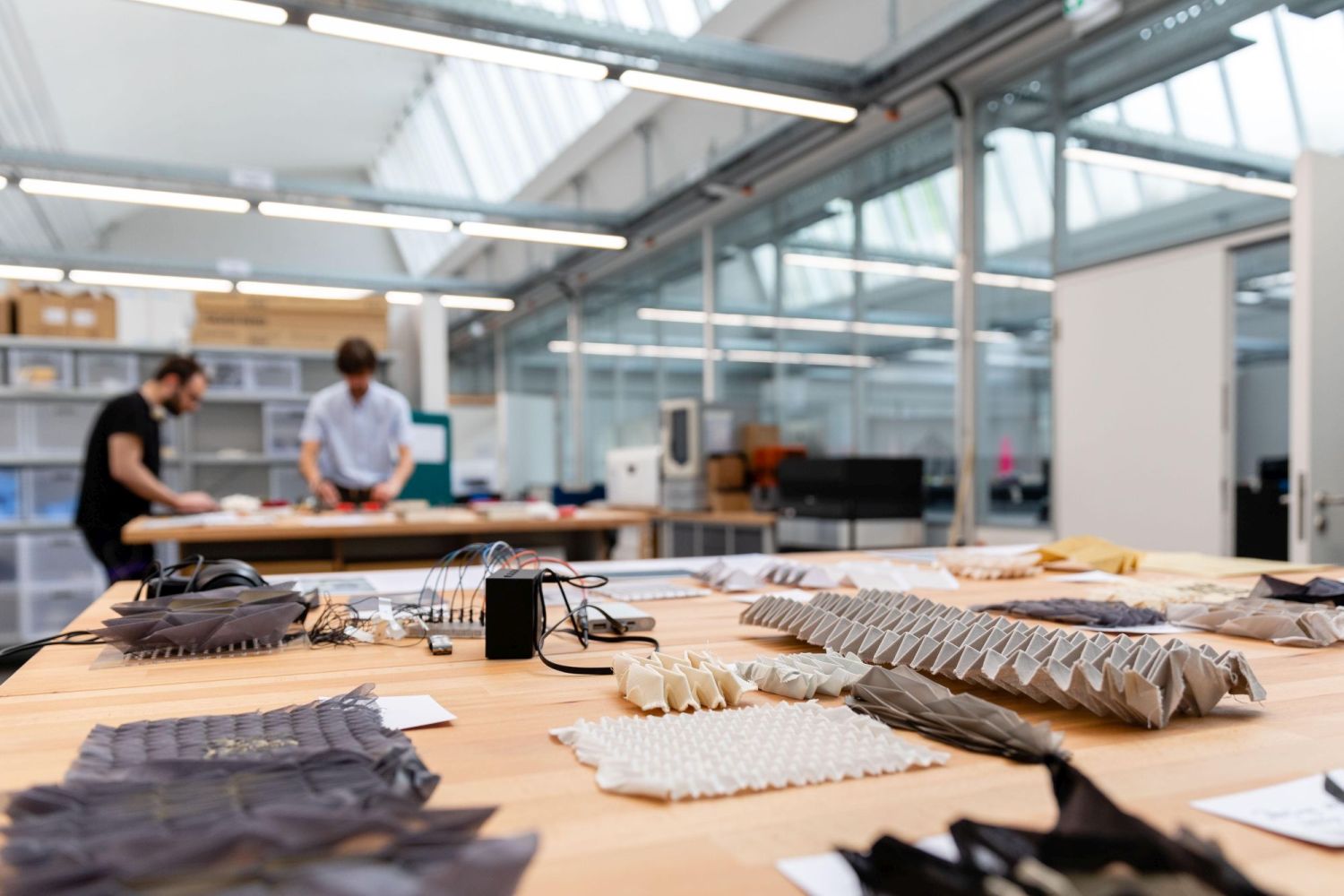
Here in the so-called BOL (Berlin Open Lab) the idea of creative space is taken one step further, as artists and scientists are provided a research location and workshop for the construction of prototypes, where they can do manual work. In the short time of its existence the Berlin Open Lab has already helped a number of researchers engage in innovative collaborations. Currently work is being carried out on so-called “smart materials” – materials with special properties – for both the textile and design industries; innovative construction methods and materials are being tested; and various subjects related to digitalisation and society are being explored.
Collaboration in research and instruction
The joint acquisition of knowledge should, however, also take place outside of such special locations as labs equipped and conceived for collaborative initiatives. A further objective of the Hybrid Plattform is to promote interdisciplinary exchange in the classroom. An increasing number of seminars and lectures are explicitly geared for students of both the UdK and TU. Here instructors, students and artistic and research fellows of both institutions enter into dialogue and carry out experiments with the combined expertise of their respective fields.
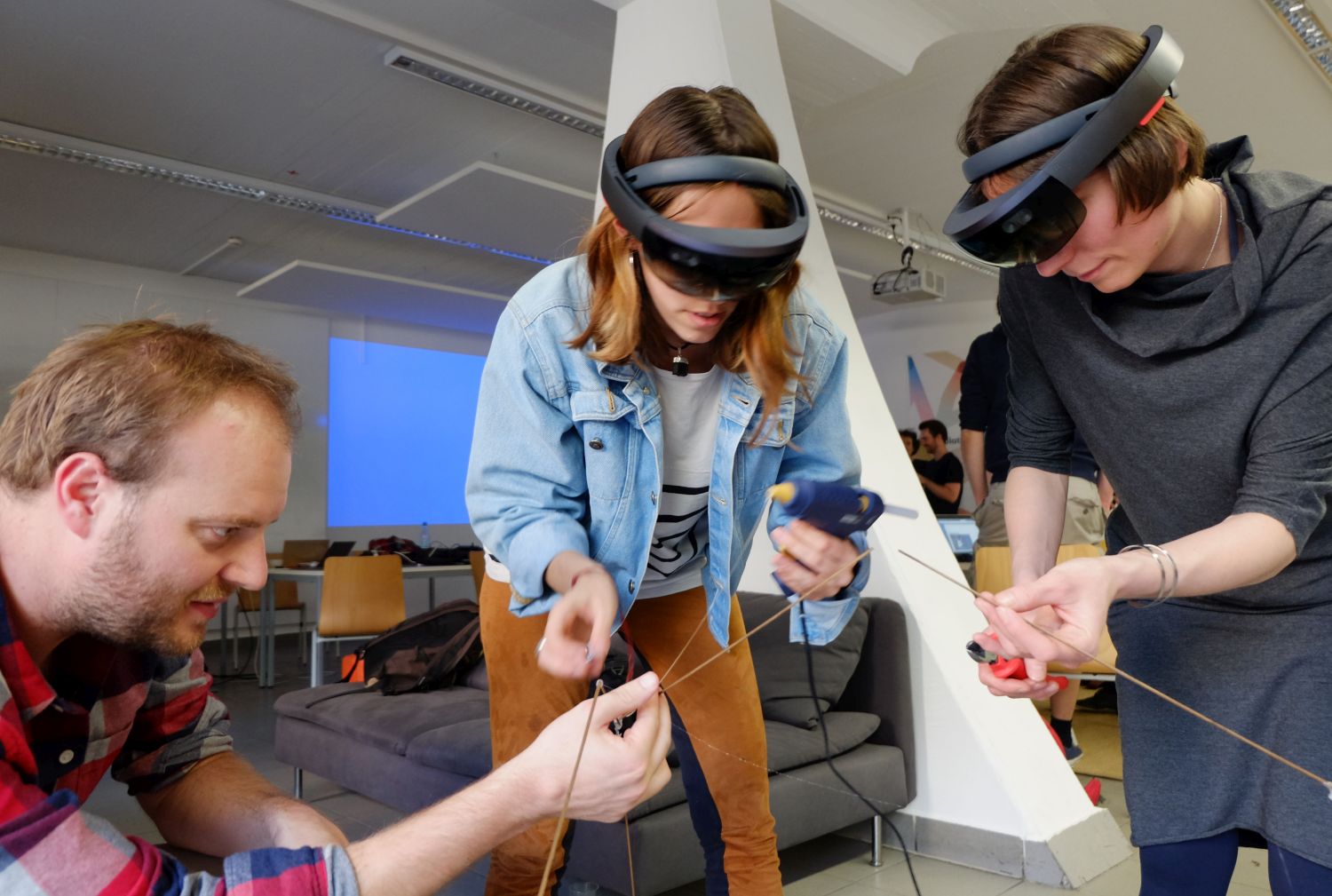
A course on Augmented Reality (AR) – the enhancement of optical perceptions with, for example, additional images or information – was offered to doctoral students. Here researchers from creative fields (product design, architecture, graphic design, etc.) and from the engineering sciences utilised the same tools to take on different challenges. The joint study programme Design & Computation will begin in 2020, bringing together scientists and designers with different backgrounds who will learn to critically and creatively utilise new technologies.[10] Basic skills and knowledge for successful collaborations in scientific contexts across different institutions, academic fields and specific disciplines will also be communicated. Together with the TU Berlin’s Center for Technology and Society [Zentrum Technik und Gesellschaft], the Hybrid Plattform offers the annual workshop Interdisciplinary and Transdisciplinary Collaboration – Research between the Realms of Science, Technology, Art and Society to instructors and research and artistic fellows. The goal of the workshop is a systematic exploration of, reflection on and sensitisation to the subject by solving tasks and challenges related to design processes in the realms of science, technology, art and society. The workshop provides a theoretical foundation to better understand this type of research and allows participants to test different methodologies to successfully realise interdisciplinary and transdisciplinary projects that include artistic or creative endeavours. Here one fact that is becoming ever more apparent is made clear: interest in interdisciplinary collaboration and exchange between the arts and sciences is growing, even if there is still great uncertainty as to which methods are effective, what results can be expected and what goals can be achieved.
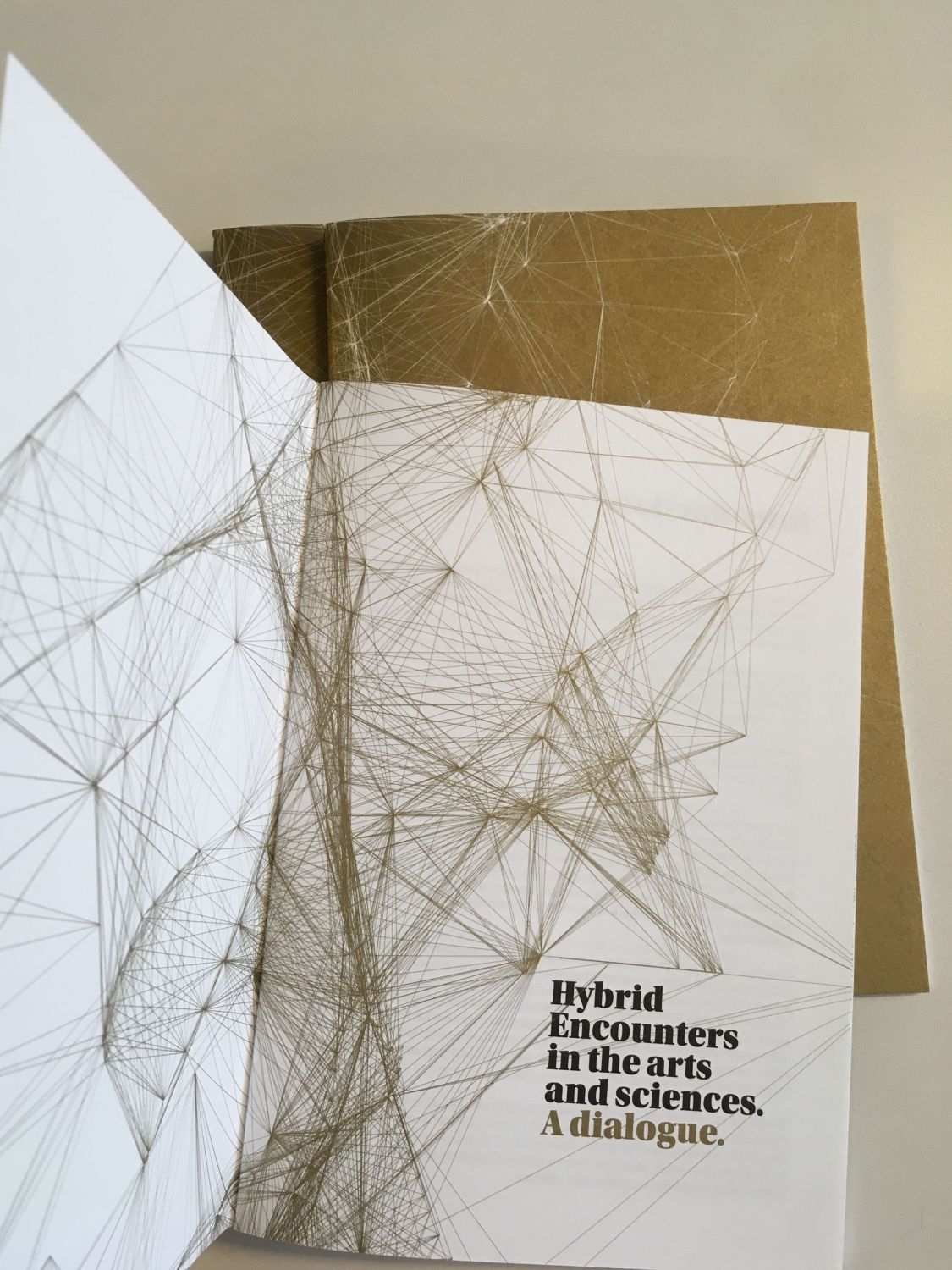
Exchange as a source of inspiration
With the same questions in mind, in 2019 the Hybrid Plattform and Schering Foundation published the book Hybrid Encounters in the Arts and Sciences. A Dialogue.[11] The work is based on a panel discussion between four curators and innovative personalities, some of whom have been working for cultural and scientific institutions for decades. All the experts agreed that work at the interface between art and science is valuable yet varies greatly depending on the specific project and context. In some cases it is the process of learning from other methods and approaches that is constructive, while in other cases it is the friction itself that bears fruit. Academic or scientific strategies are questioned, which can lead to innovation, but is sometimes simply pleasurable and invigorating in and of itself. The experts did not fully agree on how the value of collaboration can be generated, maintained and be made relevant. The role of the curator as essential for successful exchange was emphasised, as it is the curator who stimulates, directs and advances dialogue between the disciplines. Especially at an institutional level this role is decisive in stimulating long-term change and normalizing such forms of cooperation. Experience has shown that the Hybrid Plattform’s coordinating function on campus and its numerous activities designed to initiate cooperative projects are of critical importance. With its close connection to individual university faculties and service departments it is able to sidestep disciplinary and institutional restrictions, communicate important information and develop structures to help realize projects. In addition, a driving force is needed, especially in the initial phases of a project, to stimulate and advance the dialogue between potential partners. The Hybrid Plattform sees itself as an enabler and facilitator of initiatives that strive to transcend the boundaries of individual disciplines and describes its activities with such terms as “support”, “inspire”, “discover”, “match”, “bundle”, “catalyze” and “initiate dialogue”. Its work is based on an understanding of exchange that defines successful collaborative action across the boundaries of individual disciplines as “emergent” – that is, something that unexpectedly comes to be through the interplay of multiple factors. Such actions cannot be planned in detail or predicted, but the conditions for their materialization can be influenced by facilitating and “intelligently and efficiently coordinating”[12] hybrid working methods. The process is (still) for the most part intuitive and relies on staff members’ extensive experience with institutional interfaces. The question as to how it may nevertheless be possible to develop better methods has not yet been answered, but there have been many conversations between actors in Germany and other countries engaged in similar processes.
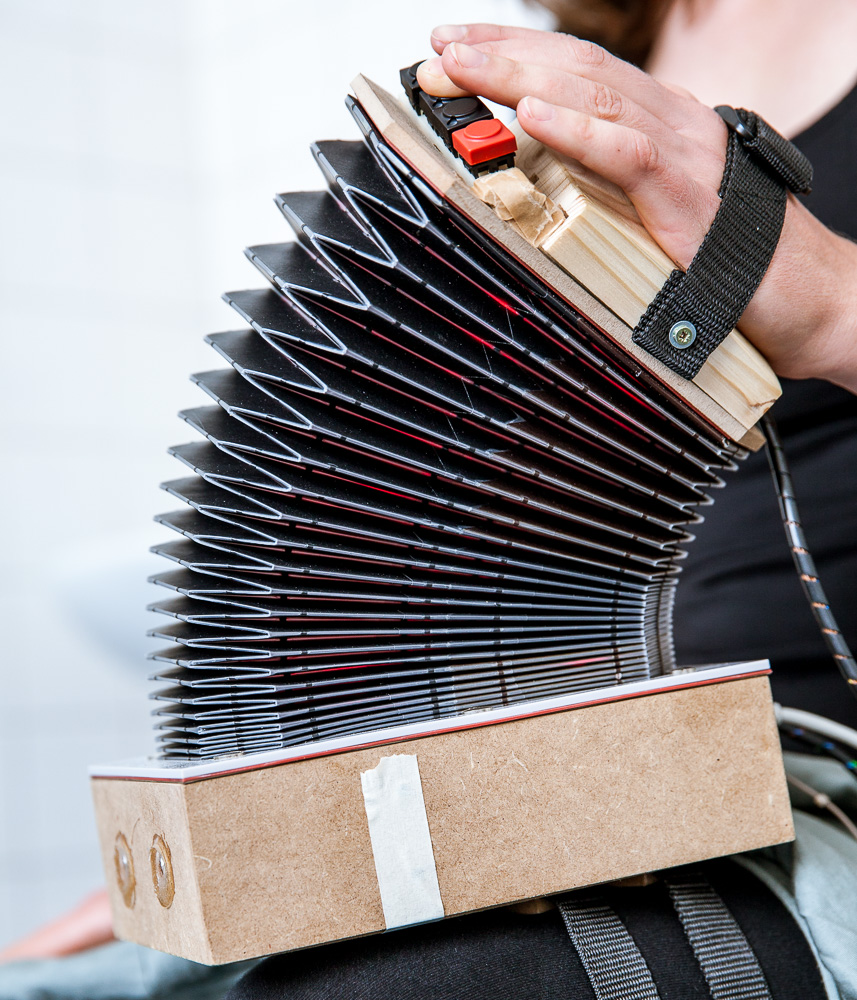
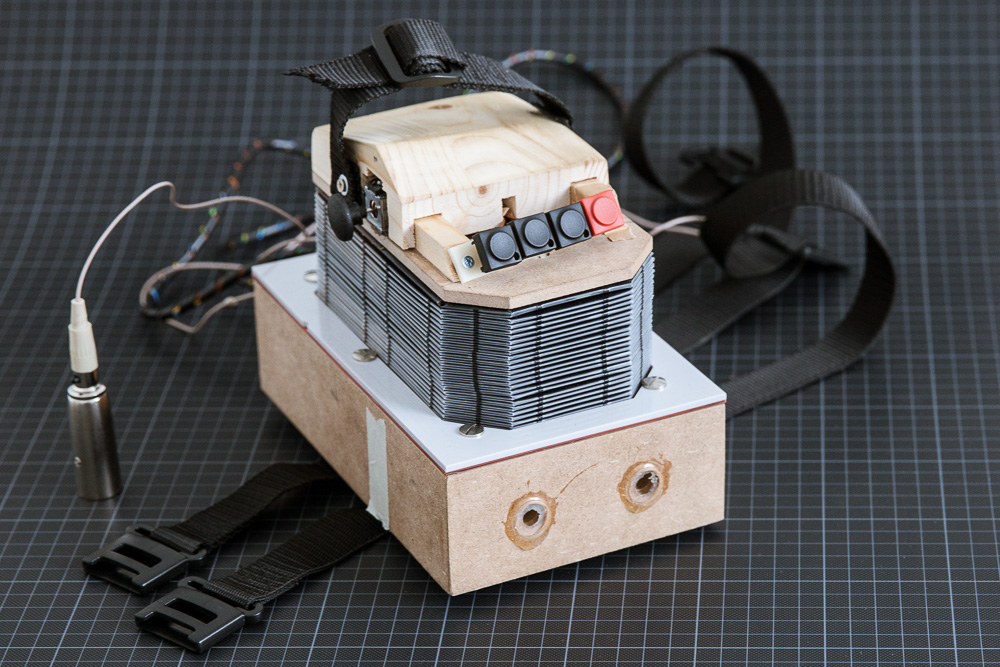
Part coordination, part curation
Despite their vital importance, the literature does not take adequate account of the work of pioneers,[19] especially in their role as internal and external communicators. In this regard the value of the Hybrid Plattform is becoming increasingly apparent, above all with respect to funding opportunities, where the term “outreach” – that is, public relations and communication of knowledge – is becoming more and more relevant. The Hybrid Plattform has been able to make an important contribution to the above mentioned research projects in presenting their results to the public. With a website on which all interdisciplinary courses and projects are presented, events are announced and weekly articles on the subject of art and science are published (with a focus on the projects of the TU Berlin and UdK Berlin), the Hybrid Plattform has developed a large, interested community over the course of the years. Information is also circulated on social media and published in printed form – from posters to flyers and pamphlets – in order to arouse the curiosity of other groups as well. In this way Hybrid Plattform does not just communicate results but stimulates exchange between the arts and sciences and breaks down (intellectual and systemic) barriers. This is the objective of the successful event series Hybrid Talks, which has taken place 40 times in the last six years. The format is simple: five instructors from the UdK and TU and one external expert are each given 10 minutes to provide insights into their research, creative work or art. As the presentations all relate to an overriding theme, for example Time, Transparency, Transience or Intelligence, unexpected commonalities in content or methodology and complementary approaches or fields of knowledge are often discovered. The fact that after the event all speakers and guests are invited for an informal chat over drinks is of crucial importance, as this leads to animated discussions and lively exchange between representatives of diverse disciplines and subjects. The series of events is very popular with students, lecturers and the general public. An average of 70 people take part – despite the wide range of events on offer in Berlin. Further event formats have been initiated in collaboration with external partners including the Schering Foundation and Futurium, in order to present works and ideas related to the arts, sciences and technology to the public.

In the course of its ten-year existence the Hybrid Plattform has experienced a cultural change within the TU and UdK. There is increasing interest in active mutual exchange. Hybrid themes and projects are becoming the norm and on a systemic level there is a closer relationship between the arts, sciences and technology and between the two universities. The Hybrid Plattform is certainly not the only catalyst of this cultural shift in Berlin but it has played a decisive role. Feedback always shows that a service that helps to initiate, support and promote such projects and is able to overcome individual, structural and administrative obstacles is of great value. And yet more is needed to promote multidisciplinary research and teaching than this expertise in interdisciplinary practice. Interdisciplinary and transdisciplinary processes require more (temporal, staff-related, financial and spatial) resources, new criteria to assess quality and other aspects (not final but process-related benchmarks) and, considering the scarcity of funds, “intelligent financial allocation”.[20] The Hybrid Plattform is very fortunate to have the full support of the heads of both universities, who recognize that the challenges of an ever more complex world can only be productively tackled with the help of multidimensional perspectives and research processes. The directors of the two universities recognize the value of hybrid culture, of cooperative knowledge in education, and of research beyond the boundaries of individual disciplines as part of the universities’ educational mandate. It is an investment in the future, in which new ideas and creative and innovative solutions will be urgently needed.
Picture above the text: Hybrid Plattform Signpost (2016). Photo: Hybrid Plattform.
[1] https://www.hybrid-plattform.org/services/publikationen (accessed on 9 March 2020).
[2] See for example Jens Badura, Selma Dubach, Anke Haarmann, Dieter Mersch, Anton Rey, Christoph Schenker and Germán Toro Pérez (eds.): Künstlerische Forschung. Ein Handbuch. Berlin, Zurich 2015.
[3] See for example Claudia Schnugg: Creating ArtScience Collaboration. Bringing Value to Organizations. Basingstoke 2019.
[4] For additional reading see the Hybrid Plattform’s website, where all projects and events are presented: https://www.hybrid-plattform.org/.
[5] https://www.hybrid-plattform.org/services/publikationen (accessed on 9 March 2020).
[6] Ulli Weisz, Sandra Karner, Ralph Grossmann, Peter Heintel: Zwischen Welten. Transdisziplinäre Forschungsprozesse realisieren. In: Gert Dressel, Wilhelm Berger et al. (eds.): Interdisziplinär und transdisziplinär forschen. Praktiken und Methoden. Bielefeld 2014, 121–134 (especially 130).
[7] Katherina Heimerl, Gert Dressel, Verena Winiwater, Wilhelm Berger: Doing Inter- und Transdisziplinärität. In: Dressel, Berger et al. (eds.): Interdisziplinär und transdisziplinär forschen (ibid.), 297–312 (especially 305).
[8] See Julia Warmers, Christoph Gengnagel: Neue Dynamiken durch Kooperation – die Hybrid Plattform als inter- und transdisziplinärer Denk- und Forschungsraum. In: Günther Abel, Martina Plümacher (eds.). The Power of Distributed Perspectives. Berlin 2017, 137–172.
[9] See https://berlin-open-lab.org/ (accessed on 9 March 2020).
[10] Study programmes with comparable content and approaches are offered in Bremen (Digital Media) and Stuttgart (Digital Humanities).
[11] Nina Horstmann, Christina Landbrecht (eds.): Hybrid Encounters in the arts and sciences. A dialogue. Hybrid Stiftung / Schering Stiftung. Berlin 2019. https://www.hybrid-plattform.org/services/publikationen (accessed on 9 March 2020).
[12] Jürgen Mittelstraß: Methodische Transdisziplinarität. In: TATuP – Zeitschrift des ITAS zur Technikfolgenabschätzung, 14/2 (2005), 18–23. http://www.tatup-journal.de/tatup052_mitt05a.php (accessed on 9 March 2020).
[13] Experiences with project coordination and supervision are described in the project publication: Christoph Gengnagel, Emilia Nagy, Rainer Stark (eds.): Rethink! Prototyping. Transdisciplinary Concepts of Prototyping. Berlin 2016.
[14] See Maria Oppen, Claudia Müller: Von der Kollision zur Kooperation. Zusammenarbeit zwischen künstlerisch-gestaltenden und technisch-naturwissenschaftlichen Disziplinen. Berlin 2014. https://www.hybrid-plattform.org/services/publikationen (accessed on 9 March 2020).
[15] See Johanna Schindler: Subjectivity and Synchrony in Artistic Research – Ethnographic Insights. Bielefeld 2018.
[16] See Marcel Hunecke, Ines Heinen: Methodologische GrenzgängerInnen – Transdisziplinäre Wissensintegration durch UmweltpsychologInnen in der Nachhaltigkeitsforschung. In: Umweltpsychologie 16(1) (2012), 88–111.
[17] Arno Bammé, Armin Spök: Probleme wahrnehmen und strukturieren. In: Dressel, Berger et al. (eds.): Interdisziplinär und transdisziplinär forschen (ibid.), 37–49 (especially 39).
[18] Wolfgang Krohn: Künstlerische und wissenschaftliche Forschung in transdisziplinären Projekten. In: Martin Tröndle, Julia Warmers (eds.): Kunstforschung als ästhetische Wissenschaft. Beiträge zur transdisziplinären Hybridisierung von Wissenschaft und Kunst. Bielefeld 2012, 1–19 (especially 16).
[19] For an interesting article on the challenges and demands in relation to technical skills, methodological and field skills, social skills, human resource / intuitive skills and management and supervision skills in research teams, field practices / system practices, the academic system and other factors, see Larissa Krainer, Ruth Lerchster: Management von transdisziplinären Forschungsprojekten im Spannungsfeld von Rollenflexibilität, Aufgabenvielfalt und mehrdimensionalen Kompetenzanforderungen. In: Forschung, 2015/08/20, 89–99.
[20] Katherina Heimerl, Gert Dressel, Verena Winiwater, Wilhelm Berger: Doing Inter- und Transdisziplinärität. In: Dressel, Berger et al. (eds.): Interdisziplinär und transdisziplinär forschen (ibid.), 297–312 (especially 308).
How to cite this article
Nina Horstmann (2020): Hybrid Plattform. w/k–Between Science & Art Journal. https://doi.org/10.55597/e6410
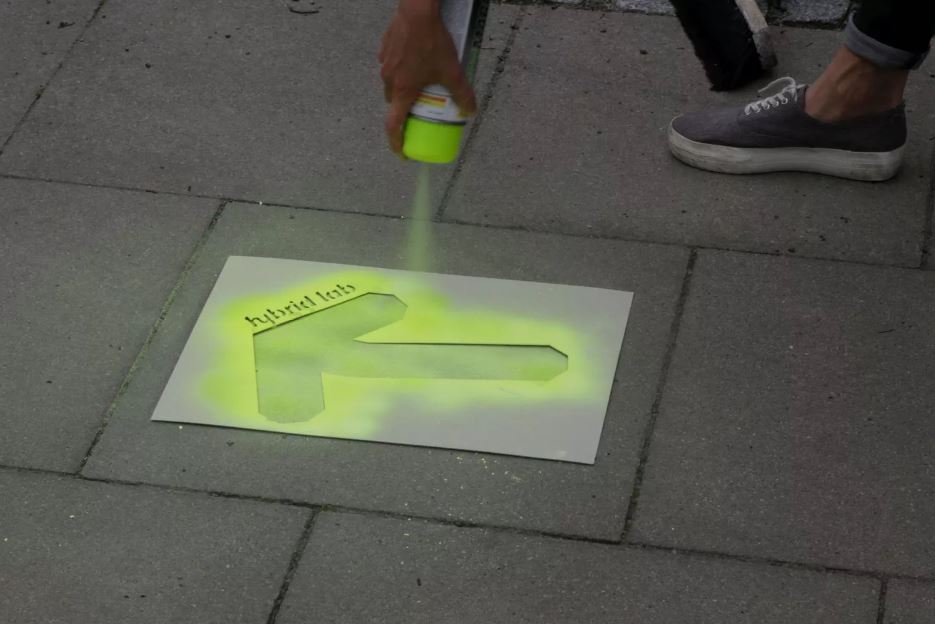

… [Trackback]
[…] Here you can find 80641 more Information on that Topic: between-science-and-art.com/hybrid-plattform/ […]
… [Trackback]
[…] Find More Info here on that Topic: between-science-and-art.com/hybrid-plattform/ […]